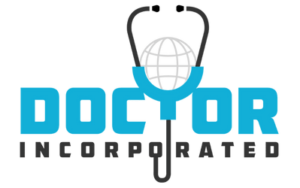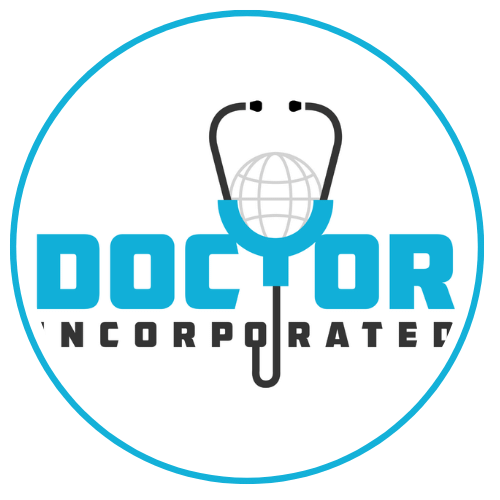
I am not gonna lie, for some of you this information will feel like gold, and for others, it’s gonna gloss your eyes over while you look for next week’s blog.
Even if you outsource most of the business management for your PC, the following information will be helpful to understand how to operate your small business.
So here we go as I explain the tasks and work of the bookkeeper role in your company and also provide a general overview of how you will need to manage the flow of your hard-earned dollars through your business and home.
The following are some basic elements in connection with bookkeeping that you will need to have in place to run your small business.
Book-Keeping Setup
You need to determine who will do the book-keeping for you:
- You can do it yourself.
- You can have someone in your household do it. In my case, for example, my PC employs my spouse as the bookkeeper. This provides additional household income, opens up some retirement and fringe benefit channels for both of us through the business, and allows us to conveniently manage checks and basic financial tasks in our own home.
- You can outsource it to your CPA-accounting service.
Note, if you choose to either do the bookkeeping yourself or employ a family member to do it, you will still typically want to work with an accountant for your business, as their roles are different. Generally speaking, bookkeeping is designed to generate data about the activities of a company, and accounting is designed to turn data into information. Essentially bookkeepers upload the data and accountants provide their professional interpretation of the data. Both roles are important.
You will need an online accounting service for entering and documenting your business financial information, Quickbooks online is a suggested service and you can either choose the essentials or the plus version, based on your accountant’s recommendation.
You will want to link your business bank account to the online accounting service. You will want to provide your trusted account users access to your online accounting service and this should include your CPA-accounting service provider whom you should make sure to include “Bill-Pay” access as well.
You will need business checks that are compatible with QuickBooks (or whatever you use for online accounting). Your bookkeeper will use this for managing checks. I use checks unlimited for this and prefer the 3-tier system because it allows for adding in the business purpose for documentation purposes/better tracking. Check out this link for those laser checks.
For your home office, I highly recommend purchasing a high-quality printer as well as a high-quality scanner. I personally like and use the Scansnap scanner from Fujitsu. Don’t fear the high cost, this is a worthwhile investment for your business office (at home) and is a covered business expense
Book-Keeping Tasks
Corporate Credit Card-I recommends you obtain a personal or corporate card-debit card that is dedicated for use for your business. This will help you keep things separate from your personal finances. There are lots of options for choosing a credit card, but I recommend starting by searching for those with no annual fee.
Annual Business Budget—I suggest you create an annual business budget for your PC, although your micro-business is relatively simple because it will be based upon your professional services with just a handful of income sources. There will be little to no sales, marketing, or inventory to manage. It really is a simple and powerful small business model for you as an individual doctor, which is why I call it a micro-small business. I like the spreadsheets and step-by-step guide that Quickbooks provides as a starter if you don’t have something you use already. You might also check with your accounting service provider to see if they have a preferred budget spreadsheet that they want you to use, which is what I do.
Accounts Receivable -This ensures that your business is getting paid for its goods and service. This primarily represents your 1099 income from your professional services through your PC. But depending on the number of side jobs you have, and the creative use of your professional powers–this can have multiple income channels associated with it.
Accounts Payable-How you make your business pays bills and invoices on time. These include various business expenses associated with operating your PC such as cell phone, internet, office operating expenses (see above), accounting, and tax services
This includes paying for your professional business expenses associated with your PC, like:
- Professional association membership
- Medical malpractice insurance
- Medical staff renewal fees, etc…
- This includes fringe benefit plan items like health-dental-eye insurance, disability insurance reimbursement program*, life insurance, tuition reimbursement program, etc…
- This includes invoices that you will generate for reimbursement from your PC for professional activities & business expenses like CME, transportation mileage (I recommend Mile IQ app for tracking this), and other business-related expenses. Of note Quickbooks online has receipt capture and mileage tracking built into via their phone app.
I suggest setting up an automated payment system or working with your accounting professional to automate your payments for any predictable or recurrent payable accounts.
Payroll
You get to decide how much you and any of your employees will be paid along with how often those payments are made. Make sure to set this up and manage it with your accountant as you will want to collaborate on your IRS-defined “reasonable salary” in conjunction with their professional opinion. The reason for carefully organizing this is that the IRS uses “reasonable salary” as an audit target for many small business owners who attempt to lower their taxes by receiving more of their income via business distributions rather than self-employment salary. Traditionally most accountants recommend the 60:40 rule be applied here, meaning that 60% of your income as a small business owner should arrive via salary and 40% via business distributions. If you stay within these proportions, you will be much less likely to get audited. I would add here that the IRS also knows what doctors are typically paid, as well as your own personal history of earned individual income. Thus, if you deviate outside of these numbers, it will also place you at risk of getting audited. There are clearly tax advantages to finding the sweet spot for your household dollars arriving with a combination of salary and business distributions, thus working this out with your accountant is wise. This entire conversation is often foreign to the traditionally employed W-2 doctor, but it is an important topic for the savvy micro-PC physician.
Taxes—most PCs will be set up as an S Corp and thus the following information will apply to you:
The Corporation Taxes
- An S Corp passes through its profits, losses, credits, and deductions to its shareholders who report it on their personal tax returns. Therefore, the S Corp doesn’t pay federal income taxes. Owners are taxed based on their percentage of ownership for corporate distributions.
- Pay federal quarterly payroll taxes which report the income taxes and FICA taxes withheld from your salary, as well as the portion of payroll taxes paid by the S corporation. Your CPA-accounting service will help you with this.
- Pay state & local quarterly payroll taxes-Your CPA accounting service will help you with this.
- Federal annual tax return for corporations. Your tax professional will help you complete this for you.
Employee TAXES
- Payroll taxes-Payroll taxes are taxes that are imposed on employers and employees by federal, state, and local governments
The employer and employee split payroll tax half and half. The employer is required to withhold the amount of the employee’s share of the payroll tax and submit it to the IRS and the state along with a payroll tax return. - As an owner, You will have to pay Social Security and Medicare taxes (FICA taxes )on the salary you earn from the S Corp. However, a benefit of the S Corp is the fact that you don’t have to pay self-employment taxes on the wages you earn from the business or the distributions paid out.
- Employees of the S Corp (spouse, children, etc…) will likely pay other types of taxes, including withholding taxes, employment taxes, paying FICA taxes for the Social Security and Medicare taxes that will be jointly paid by you and the employee, workers compensation taxes, and unemployment taxes.
- Federal annual tax return for you as an individual, your tax professional will help you complete this for you.
Taxes can be confusing, challenging, and constantly changing, which is why I suggest you work with a qualified CPA-accounting service for this component.
Profit & Loss Statement
All of these numbers will add up to what is called a profit & loss statement for your business (P&L). A P&L statement is a go-to financial statement that shows how much your business has spent and earned over a specific period of time. Your P&L statement shows your revenue, minus expenses, and losses. The outcome is either your final profit or loss. A P&L is typically prepared around tax time. But business owners can run a P&L statement monthly, quarterly, or annually to verify profits and compare certain periods of time to show growth. Ultimately this is the data sheet that your accountant will use to interpret your company’s overall financial health as they monitor the flow of the dollars into and through your small business. Like any small business, the benefactors of those dollars will be the business, owner(s), and employees. In your micro-PC, this is really about you and your household and how those dollars earned from your work will land in your home.
Getting Dollars Into Your Home
From a cashflow standpoint, your household dollars will come from a combination of your owner’s salary, tax-advantaged retained income, owner distributions, and employment compensation from any family members. As we’ll discuss in the next post, the flow of these dollars into your home is much different than the typical W-2 employee.
These a just the basics when it comes to managing the flow of money in your small business, but understanding it is the secret to figuring out how to retain more if it for your household.



